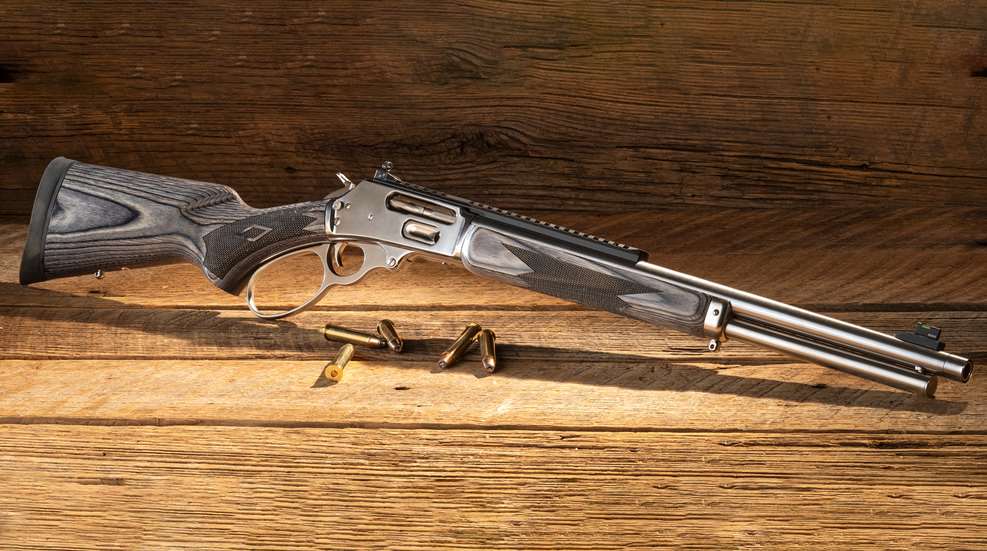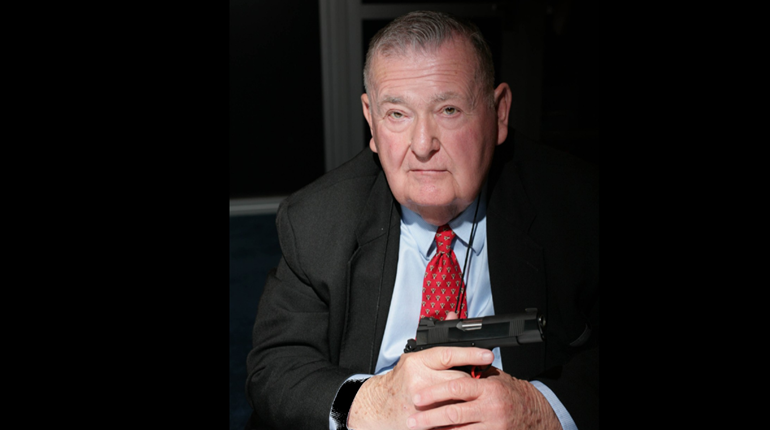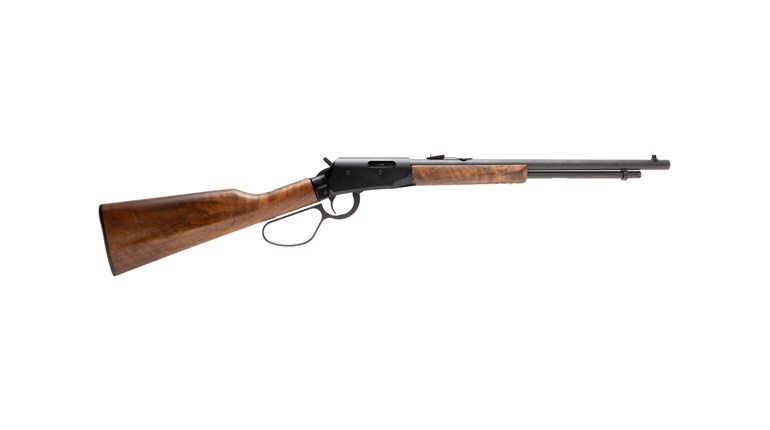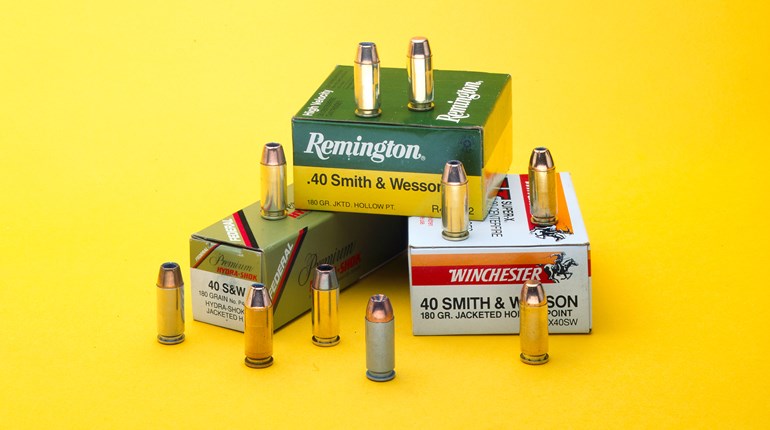
Marlin’s new Model 1895SBL is but one example of America’s ever-enduring fondness for lever-action firearms.
At the mid-point of the 19th century, the world of firearms was changing fast. The main service rifle was still a cumbersome single-shot of .69 caliber. It worked on cap, ball and powder, delivered a massive blow and produced clouds of smoke. True, it got the job done. But, there were clever guys at work on improvements in arms that would change the way we went about hunting and fighting. Handgunners were initially a bit ahead of other designs because of several revolving-cylinder handguns. Most of the time, a greater rate-of-fire was possible because of the revolving pistols of Sam Colt, and his many imitators. There were exceptions.
One of them was an exceptional firearm called the Volcanic pistol. By 1850, there were a number of revolving handguns in widespread use, most of them from Colt. The Volcanic was also a repeater, but was completely different. Its major innovation may have been the early attempt at fixed ammunition. However, it was another novel idea—the gun being a lever-action, tubular-magazine-fed repeater—that was a true milestone in American gunmaking. With an early history of confused ownership, the ammo was originally called the “Rocketball.” It was a short lead bullet with a hollow base, in which both primer and propellent were held in place by a cork sealant. This system meant nothing to eject, so working a lever on the gun’s underside moved another bullet from the tubular magazine to the firing chamber.
Several makers used various features of the Volcanic—including two guys named Horace Smith and Daniel Wesson—but the true potential of the system was unleashed when it was purchased by a shirt manufacturer named Oliver Winchester. Another Yankee gunmaker (Tyler Henry) came up with a cartridge system that was much more reliable and was first used on rifles initially under the Henry and then the Winchester names. The Civil War began in 1861 and saw quantities of .44 Rimfire-caliber Henry rifles used to deadly effect. What a carbine or rifle should look like became part of our expectations: slim, flat-sided receiver, tubular under-barrel magazine, exposed spur hammer and a “finger lever” at the wrist of the buttstock. By the time that Winchester introduced its 1866 Model, shooters got a walnut fore-end and a loading gate, through which up to 15 cartridges were loaded.
These early lever-action rifles set a standard that appealed to several generations of American frontiersmen. The rifles and carbines of the 1860s and 1870s delivered a major-caliber bullet to a solid 100 yards, sometimes a bit farther. Both accurate and powerful, the old lever guns were sleek, and easy to carry and use. Winchester’s first model, chambered for rimfire ammunition, was followed closely by the centerfire Model ’73. A bit more strength was needed for the frame, but increased power came from several new cartridges.
Winchester introduced .44 WCF, .38 WCF and .32 WCF calibers (also known, respectively, as .44-40 WCF, .38-40 WCF and .32-20 WCF) over the early years of the ’73. Around the same time, Colt noticed that Winchester’s new cartridges were just about perfect in length for the cylinders of its new Single Action Army revolvers. Thus, was born the American practice of using the same ammunition in handgun and rifle. This tactic continues to the present and is still sound. As long as the use of pistol-caliber ammunition in a rifle is limited to 100 yards or so, it makes good sense.
However, lever actions in general broadened their appeal. Winchester introduced a long-action version of the ’73 in 1876 and John Browning began designing guns for Winchester in the mid-1880s. It was that legendary gun genius who made the term “lever-action” virtually synonymous with “Winchester.” Browning came up with two lever-action shotguns and four lever-action repeating rifles, as well as a single shot. The first two rifles (1886 and 1892) were marvels of smooth handling, and the third (1894) was and remains an American icon. The ’94 was made into the millions. The 1895 departed from the tubular magazine for a box magazine in front of the trigger. The design feature allowed this levergun to take pointed spitzer bullets for greater performance. It was even made in a military version for the Russian service cartridge, with 300,000 rifles produced during World War I.
While the most historic and widely sold lever-action rifles were the various Winchesters, that does not make for a universal endorsement. In the early 1880s, the Marlin company began producing a series of lever- action rifles that resembled the Winchesters. They were firearms of very high quality and exhibited several unique features like a solid top and side ejection. Marlin has a history that is almost as long as Winchester’s. There is also the elegant Savage 99, with a concealed hammer, advanced rotary magazine and several limited-production variants.
It is interesting to note that no other country with a history of gun making designed any great quantity of lever-actions. It is an American gun—one that came along when the country had frontiers to be conquered. The design had origins in necessity, stayed as tradition and always persisted by performance. Why else would a newer major gunmaker (Ruger) buy the assets of Marlin and keep the frontier-era maker of classic lever actions alive? Because Americans want them, and Americans know their fightin’ iron.





































